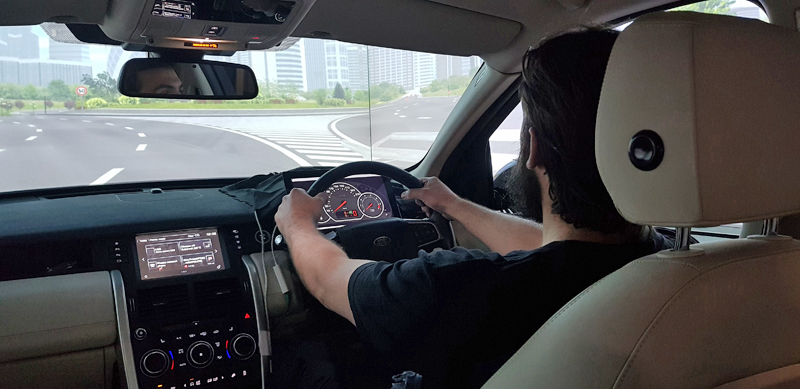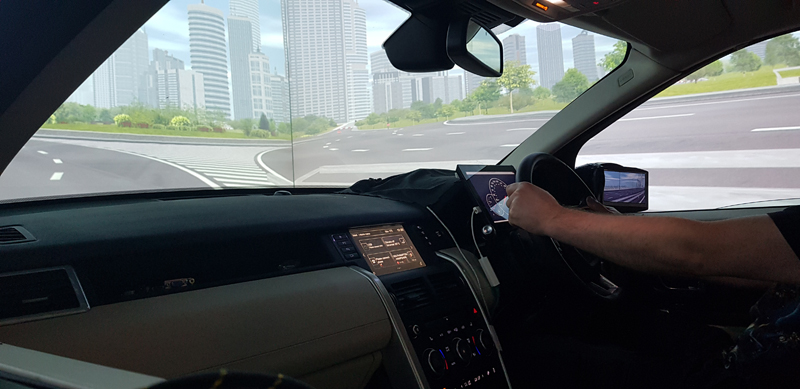Driving simulator

The Southampton University Driving Simulator (SUDS)
The Southampton University Driving Simulator (SUDS) includes a Land Rover Discovery vehicle and simulation software. It provides an immersive driving experience for human factors research. This covers several areas such as human performance and our interaction with computers, products, tools and modern day procedures.
This facility includes:
- a self-contained lab with a separate control room
- a full Land Rover Discovery vehicle
- 3 projectors providing a 135º forward field of view
- 2 simulation software packages (SCANeR Studio™ and rFpro®)
- simulated door mirrors with mini-LCD monitors
- a rear projection screen to allow use of the rear-view mirror
- in-vehicle mounted webcams


Car driving simulator software
SCANeR Studio™ offers the ability to design all kinds of road environment. We can also specify the behaviour of AI cars, motorbikes, bicycles, and pedestrians. It generates data on driving performance, such as vehicle speed, lane position, and headway.
rFpro® is a high-fidelity realistic driving simulator with vehicle dynamics analysis, testing, and driver training. It features high-definition laser scanned versions of real roads.
Data capture
Data is captured at 100 Hz and includes interactions with all controls in the vehicle and simulated variables such as:
- speed
- headway distance
- lane position
The software can run on a desktop system using a single screen and a gaming steering wheel and linked pedals.
Functions and controls
In the car driving simulator, information can be provided through the vehicle’s original instrument cluster or through a re-configurable touchscreen display. The car’s native audio system delivers simulation sounds, and all vehicle controls are fully functional.
Control inputs are interpreted directly from the vehicle’s Controller Area Network and sent to simulation software. A secondary application sends the data to a Windows game controller driver. The car driving simulator can make outputs for any software that accepts controller inputs.
Research and consultancy
The Southampton University Driving Simulator is operated by the Transportation Research Group (TRG) within the Faculty of Engineering and the Environment. It is located on the Boldrewood Innovation Campus at the University, close to the Highfield Campus. It is well used by the TRG for fundamental research and development.
The facility is also available for applied research and consultancy in collaboration with ISVR Consulting. The TRG Driving Simulator and the ISVR Six-Axis Motion Simulator complement each other. Between them they provide a wealth of opportunities for studying not only driver behaviour but also the effect of noise and vibration on a driver’s or passenger’s ability to use equipment such as mobile phones or computers when exposed to noise and vibration recorded on typical routes.
Contact us
ISVR Consulting is an Enterprise Unit linked to the Institute of Sound and Vibration Research at the University of Southampton. We work with a wide range of industrial and commercial clients, public bodies, and government agencies in the UK and Europe.
Get in touch to find out more about our facilities and how we might be able to work with you.
Tel: +44 (0) 2380 592162 email: consulting@isvr.co.uk web: https://isvr.co.uk
Address: ISVR Consulting, Building 15 (M27), University of Southampton, University Road, Southampton, SO17 1BJ.
Location: https://what3words.com/focus.shovels.affair
There are detailed directions to our location on our ‘Contact Us‘ page.

